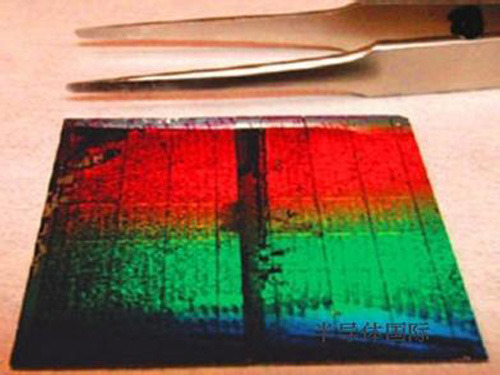
Recently, the He Junhui team of the Physical and Chemical Research Institute of the Chinese Academy of Sciences and the Sun Jialin team of Tsinghua University have made important progress in the realization of ultra-wideband photodetection. A reduced-graphene oxide-silicon nanowire array heterojunction photodetector was fabricated and a detector can be realized. The UWB light detection from the visible light to the terahertz wave is completed, and the detection bandwidth that can be achieved by multiple detectors at the same time can be achieved. Related results were published on the "Microscale."
According to reports, broadband optical detectors are widely used in infrared imaging, remote sensing, environmental monitoring, astronomy detection, spectral analysis and other fields. In the field of infrared imaging, in order to achieve true multi-color infrared imaging, the detector must be able to detect infrared radiation in different wavelengths at the same time, such as shortwave infrared, mediumwave infrared, longwave infrared, very longwave infrared, and even terahertz radiation. It is quite challenging.
The reduced product of graphene oxide prepared by chemical exfoliation of graphite is called reduced graphene oxide and has a natural energy gap, and this natural energy gap can be controlled by the degree of reduction of graphene oxide. The silicon nanowire array is suitable for detecting visible and near-infrared light, and the ordered nanowire array structure can strongly suppress light reflection, thereby improving the light-capturing capability of the device.
The researchers combined the advantages of reduced graphene oxide and silicon nanowire arrays to produce a reduced graphene oxide-silicon nanowire array heterojunction photodetector. The heterojunction photodetector realized ultra-wideband detection from visible to terahertz waves for the first time at room temperature. They also found that the degree of reduction of graphene oxide has a significant effect on the detection performance. With the increase in the degree of graphene oxide reduction, the detector response rate can be increased by more than 5 times. The detector has the highest response to long-wave infrared at all wavelengths.
The experiment confirmed that the detector has a sensitive response to human infrared radiation and can be used for human body infrared sensing such as night vision. Therefore, the reduced graphene oxide-silicon nanowire array heterojunction photodetector has a good application prospect in the field of ultra-wideband light detection, especially broadband infrared light detection.